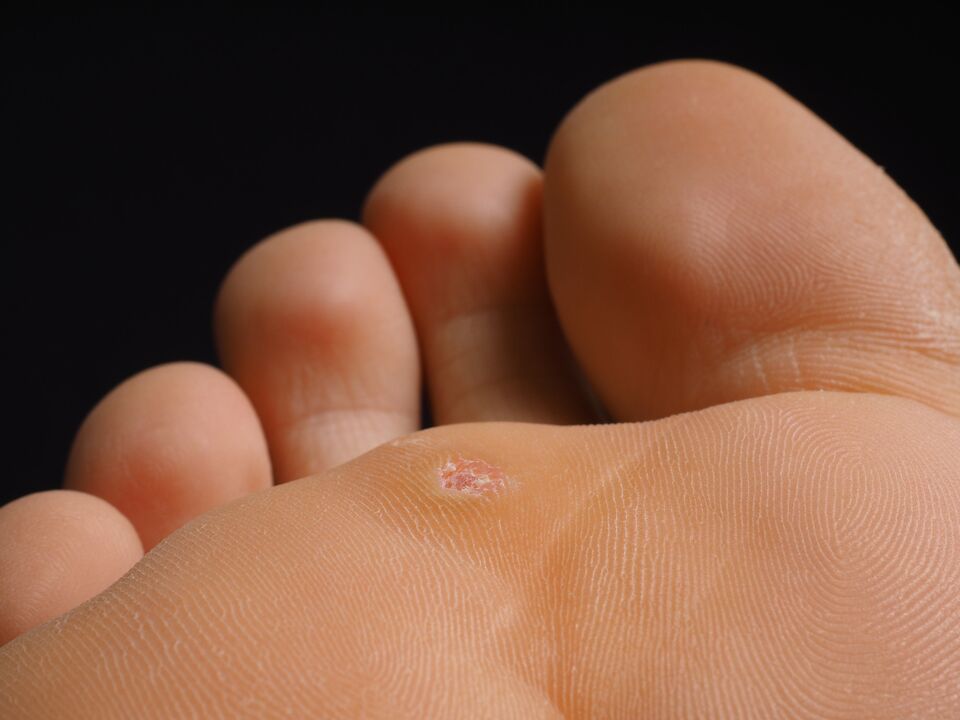Wart - an external manifestationpapillomavirus infection in the body. . . You can distinguish a wart from a mole on its own. As a rule, warts are difficult to touch as they are covered by a horny mass and cause discomfort to the touch. Moles, on the other hand, are slippery and soft. On the outside, the wart is close to skin color and stands out with a light pink or yellow hue. A mole, on the other hand, always looks darker on the skin due to the accumulation of pigment in the cells of the epidermis.
Signs of wart and infection routes
For wart formations, their growth is characteristic when less similar shapes appear near the first. The main prerequisite for their appearance is general health. If you find a new growth with a weakened immune system after illness or stress, it is most likely that the problem is papillomavirus. Only a professional examination, analyzes and other diagnostic procedures can confirm or deny the presence of the disease.
Papillomavirus can enter the human body through cuts in the skin or mucous membranes in the following cases:
- direct contact with the wearer (however, he does not necessarily have warts);
- general use of household items (plates or personal hygiene items);
- during intercourse (warts may occur in intimate areas);
- non-sterile instruments (in the manicure room, the tattoo parlor, the doctor's office);
- in public institutions (sauna, swimming pool).
You should carefully monitor the integrity of the skin and choose proven sites for sports, recreation or personal care.
Causes and types of warts
The limbs, face and neck are most susceptible to possible infection. Microtrauma during shaving or work contributes to the penetration of the virus. By touching the face and other parts of the body with your hands, you can provoke the appearance of warts in these places.
Warts can be divided into several types.Ordinary- These are dense formations with a rounded shape. When touched, the surface is rough. They can appear on hands or head without causing obvious painful sensations. As a serious cosmetic defect, timely treatment is required.
Plantar type- growth that in their appearance resembles very hard skin and delivers unpleasant painful sensations. As a rule, they are formed at the points of contact between the foot and the shoe. They require long-term treatment using various drugs.
The size of flat warts does not exceed 1 cm, they are usually painless. Most often they are flesh-colored, but they can be yellowish and protrude slightly beyond the surface of the skin. Formations of this type may disappear on their own or remain for a long time if the defect is not eliminated.
Genital or genital wartsoutwardly resembles a rooster comb. As a rule, they are a consequence of intercourse and can occur on the oral mucosa or in the genital area. Upon mechanical contact, they cause pain. An infection can cause their inflammation and increase in size. The treatment of genital warts should be treated only by specialized specialists - urologists or gynecologists.
Treatment of warts

The treatment of warts, which is only an external sign of the disease, must be treated in a comprehensive way. This not only involves the removal of unwanted education, but the intake of antiviral and immunostimulatory drugs will strengthen the immune system, which will limit the virus because HPV remains in the human body for life. Removing only unwanted growth does not provide a complete recovery.
Even elimination of growth requires special operating procedures and tools, so you need to get rid of warts using medical methods. Experienced specialists will always advise the patient and help choose the necessary course of treatment to finally get rid of the dangerous disorder.
Frequently asked questions
How are warts treated?
Warts appear as a result of infection with the human papillomavirus. Therefore, the treatment must be comprehensive. It is not only necessary to remove the growths, but also to undergo a course of antiviral and immunostimulatory treatment prescribed by a doctor.
What are the types of warts?
Depending on the location, shape and color, warts are divided into several types: simple, flat, palmar-plantar, filiform and pointed. They can appear on the face, palms, hands, feet, neck, armpits, groin and other areas of the body.
Which warts are dangerous?
Warts are benign growths caused by a viral infection. They are often confused with other malignant skin lesions or the likelihood of becoming cancerous. Only a dermatologist can distinguish between these formations and determine their danger.
How long does the wart virus live?
The correct name is human papillomavirus. Once infected, it stays in the human body forever.
Can warts be peeled off?
You can not pick or cut warts on your own. In these cases, only the wart body is removed, but the root of the formation remains. As a result, a relapse occurs - an even greater growth grows in this place. When a wart is roughly removed, severe bleeding occurs and an infection can enter the wound.














































































